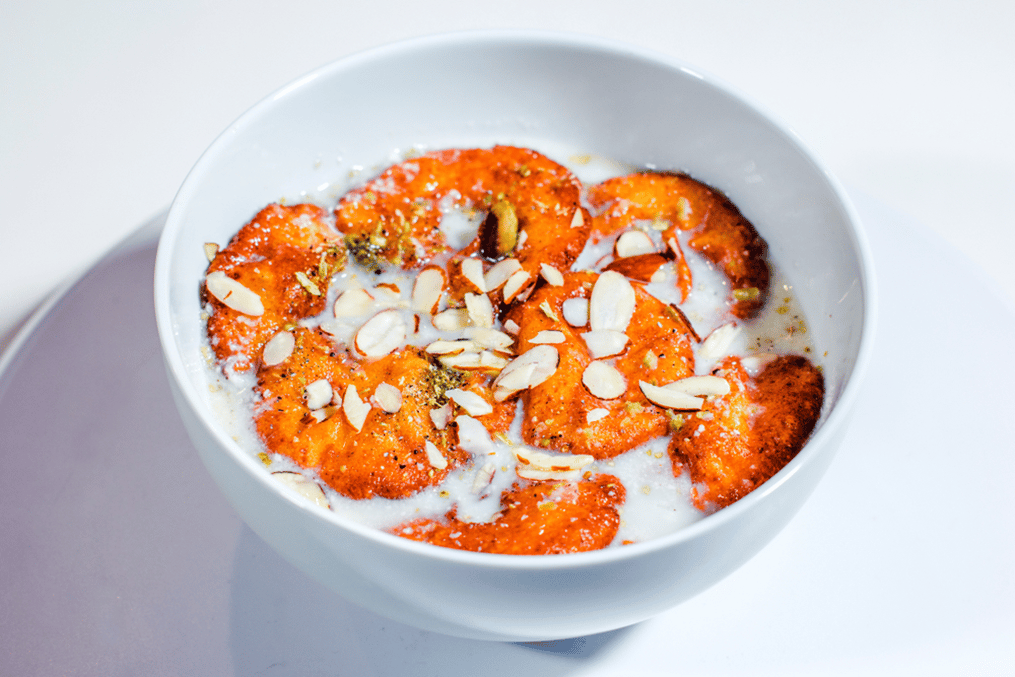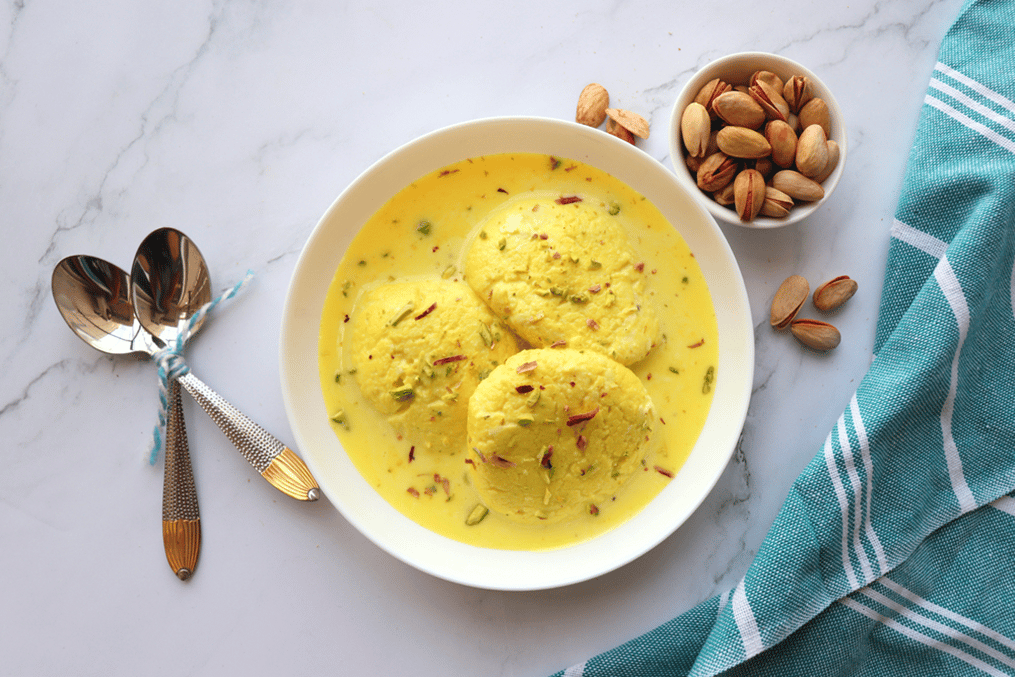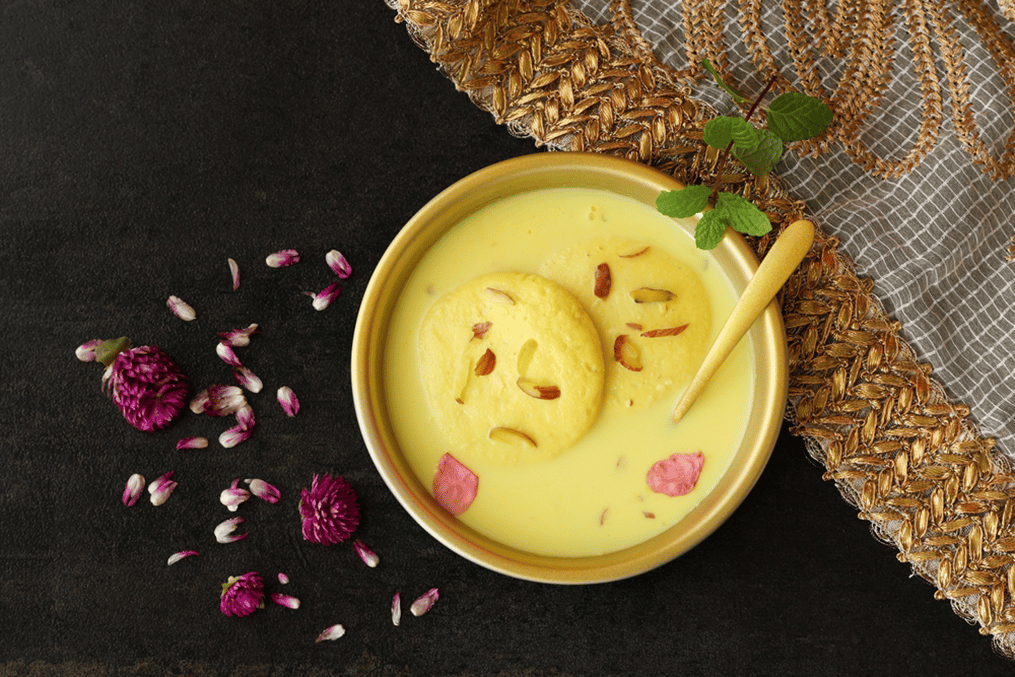One of the most renowned Bengali desserts to exist, rasmalai or rossomalai is a national treasure that holds no compare so its time for a history lesson

A Bengali favorite, Rosmalai comes from an era of great confusion when sweetmeat makers were at their peak and now two sides clash and assert dominance over its origin. While it is indeed a Bengali sweet, it is no longer restricted just to the Eastern part of the country. The rest of the country calls it Rasmalai, and whether you pick the Hindi or Bengali name, it boils down to the same thing. Ras or Rosh refers to the milky syrup and the malai refers to cream, a melt-in-the-mouth quality of the spongy rasgullas which are served in a milky sweet soup. Let’s study how one of the finest Bengali desserts took shape.
The K.C Das Sweetmakers Tale

To talk about Rasmalai one needs to talk about the rasgullas or rosogolla which is what forms the spongy balls of the rasmalai. The rosogolla was created in Bengal when the country was under British rule — between 1865 and 1868 — by the famous Nabin Chandra Das. Odisha contests this claim, but we’ll not go there. Das established a sweet in Jorasanko in 1864, which might have led to the creation of rosogolla.
Much later, one of his sons, K.C Das, made Rosmalai as an experiment with the aid of his youngest son Sarada Charan, who was a research assistant in the physics at the renowned Raja Bazaar Science College. Sarada Charan turned out to be an esteemed polymath having been under the guidance of the famous physicist C.V Raman. Using his knowledge of science, the researching Das came up with tinned or canned rosogollas, using reverse osmosis as the key.
This invention was what pushed his father K.C Das to tinker around and innovate to finally come up with the rossomalai, as it's known colloquially. The date is a little blurry, but a faded and yellowy local newspaper announcement clipping from February 1932, showcases the “rossomalai”, “rossogolla” and “sondesh”, being sold at K.C Das’ shop. This clipping is still preserved to date at the Bagbazaar branch of K.C Das’s sweetmeat shop.
As luck would have it, the shop was located where the trading community of Marwaris worked in huge numbers. They further popularized the rosmalai across the country. The plain milky version caught on. A variety with saffron called Kesar ra malai, with its beautiful color and slivers of nuts and dried rose petals, was arguably the most popular of them all.
The Bangladesh Contention

While K.C Das’s story does hold credit with food Historian KT Achaya making a note of this in his book “Indian Food: A Historical Companion”, the Sen brothers from Comilla in present-day Bangladesh contest the claim of being the inventors of Rasmalai. They were also sweetmakers and came from an era where many mishti innovations were in motion, some for royalty and some by already famed sweetmeat makers in their own shops.
The Sen brothers say that people in their region were already eating something called Kheer Bhog, which was soaked rosogollas in creamy and thick milk. Over time the rasgullas shrunk in size to make it easier to soak in the milk and as Bengal split into two, East and West, the name also changed. To this day, the Sen family lays claim over the Rasmalai. They have also applied for GI tag for this sweet, but is yet to be approved.
Rewinding the Clock Back Further

When you think about these mishti wars it's ironic that the chenna, which forms the base of much of the sweets and desserts that exist today, came from the Portuguese. The Iberians introduced cottage cheese around the 1500s and popularized it in Bengal. But even the first Bengali cookbook from 1831, had no traces of ras malai until science played its part.
Whether from Bangladesh or West Bengal, rasmalai is a sublime dessert that feels like nirvana on your tongue. There are barely any sweets that can compete in terms of texture and taste. It is packaged in cans thanks to the genius of S.C Das. Today, fusion desserts such as rasmalai cheesecakes, rasmalai pastries, and even rasmalai tres leches cakes are sold by pastry shops all over.
Like This Article?
More Like This




Popular Articles





Trending Web Stories
Curated Recipes


















